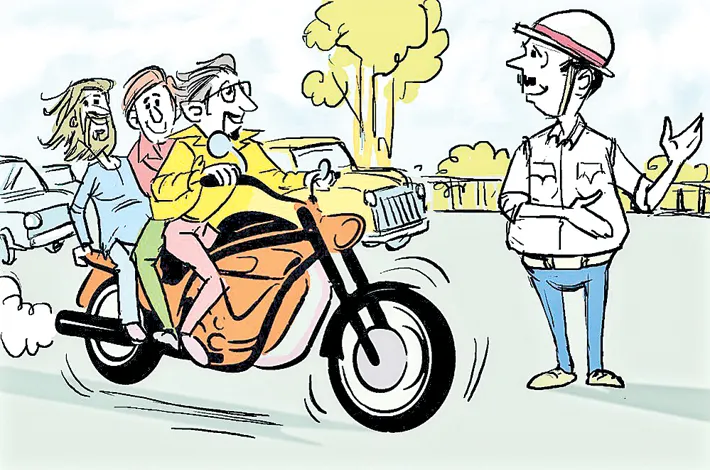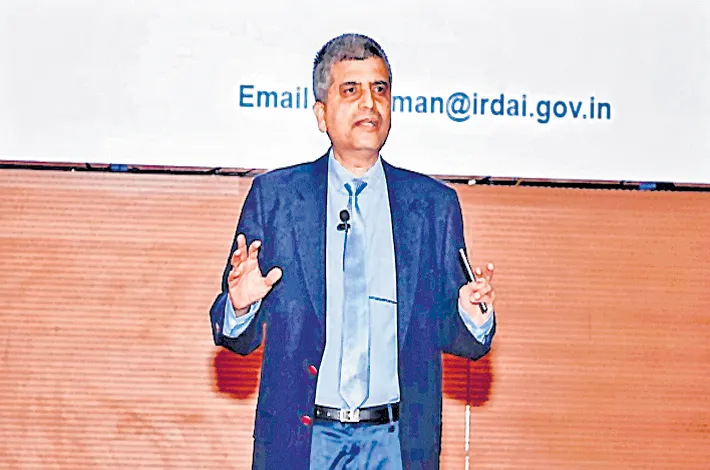Bikers in Hyd lead the surge in traffic violations
08-11-2025 12:00:00 AM

One of the most concerning aspects of Hyderabad’s traffic violations is the prevalence of distracted driving. A growing number of riders are seen engaging in activities like texting, talking on the phone, or even watching videos while driving.
HEMA SINGULURI I hyderabad
Hyderabad's escalating traffic issues have become a pressing concern, with two-wheeler riders emerging as the primary offenders. The Telangana state, grappling with rising violations, is witnessing alarming statistics, including over 1.14 crore traffic violations this year alone. Tragically, this surge in traffic indiscipline is contributing to the daily toll of 22 deaths, raising serious questions about road safety and the efficacy of current traffic enforcement measures.
Hyderabad, as the state capital, is a significant contributor to these troubling statistics. According to the city’s Traffic Control Department, the city is among the top in terms of traffic violations in Telangana. Notably, the city often tops the list of daily traffic challans, contributing heavily to the state’s overall violation numbers.
One of the most concerning aspects of Hyderabad’s traffic violations is the prevalence of distracted driving. A growing number of riders are seen engaging in activities like texting, talking on the phone, or even watching videos while driving.
This behavior poses a severe risk to public safety. Tragically, this distraction is a significant factor behind the city’s rising fatalities. In 2023, Telangana reported a staggering 7,949 deaths from 25,986 road accidents, averaging nearly 22 fatalities every day. Speeding and reckless driving account for a large proportion of these incidents, making them among the deadliest forms of driving behavior in the state.
Another widespread issue in Hyderabad’s traffic scene is helmetless riding, which has become one of the most common violations. The three traffic commissionerates in the city issued over 1.17 crore e-challans in the past year, with helmetless riding topping the list of offences.
The numbers reveal a worrying trend, with two-wheeler riders consistently disregarding safety rules. These violations extend beyond just helmet use, with cases of pillion overloads and triple-riding also contributing significantly to the violation statistics. Although fines totaling Rs 492 crore were imposed, only Rs 67 crore were collected, highlighting a significant enforcement gap that has yet to be addressed effectively.
While four-wheelers and autos contribute to violations such as neglecting seat belts, jumping signals, and illegal parking, two-wheelers are by far the most frequent offenders. Key areas like Medchal-Malkajgiri, Ranga Reddy, and Sanga Reddy have been identified as hotspots for violations such as helmetless riding and mobile phone usage. The city’s arterial corridors are often the sites of these frequent violations.
To tackle this growing issue, Hyderabad has adopted a multi-pronged approach using technology and human intervention. The city employs an integrated system that combines CCTV cameras, AI-powered monitoring, and mobile detection tools to detect violations like speeding, helmet use, and mobile phone usage.
Sanga ReddyBik This system has proved effective in scaling enforcement and continuously monitoring the roads. Cameras and ITMS systems have made it easier to capture violations in real-time and issue e-challans automatically. However, despite these technological advances, human intervention remains crucial, especially for more complex violations such as drunk driving, fitness checks, and ensuring vehicle permits and insurance.
In areas like Jubilee Hills, Ameerpet, Mehdipatnam, and the Medchal-Malkajgiri/Ranga Reddy stretches, violations are rampant. Enforcement drives in these areas reveal a spike in offenses like overloading, both for two-wheelers and autos, often occurring in suburban regions beyond the city’s core.
Recognizing the seriousness of the situation, Hyderabad’s traffic police have launched several public awareness campaigns. These include road safety initiatives in schools and colleges, QR-based educational drives, and campaigns promoting vehicle safety equipment like reflective tape. New measures set for 2024-25 include the roll-out of AI-enabled cameras, automatic e-challans for repeat offenders, and linking license renewals to infringement histories.
While these efforts are commendable, the rising number of violations and the low rate of fine collections suggest deeper systemic and behavioral issues.
Unless the enforcement mechanisms are strengthened, and the behavioral patterns of drivers are addressed through more effective public education, Hyderabad’s roads are likely to remain dangerous. The city’s struggle with traffic violations is a reminder that technology alone cannot solve the problem—consistent enforcement and a cultural shift towards road safety are equally important in preventing future tragedies.








